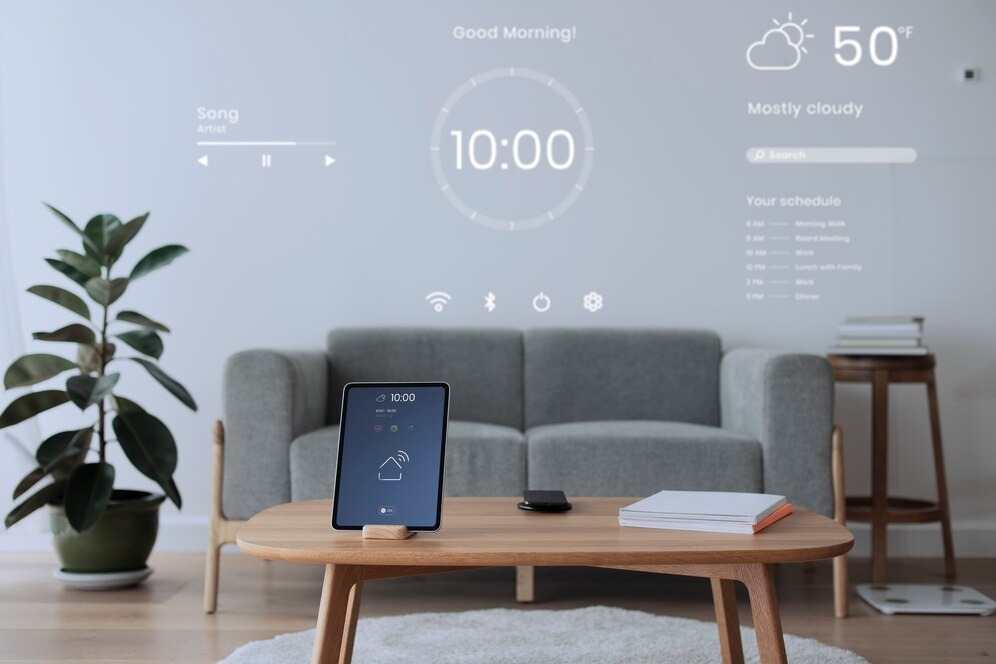Longevity science has evolved from wishful thinking to data-driven protocols backed by rigorous research. No longer just about adding years to life, the modern approach focuses on adding vibrant, functional years while potentially slowing biological aging processes at the cellular level. There are now proven strategies to boost longevity.
This article maps out evidence-based strategies that form a comprehensive longevity blueprint – actionable steps supported by current scientific understanding rather than marketing hype.
The Foundations of Longevity Science

Modern longevity research centers around several key biological mechanisms that influence how we age. These include cellular senescence (the accumulation of zombie-like cells), mitochondrial function, inflammation regulation, and metabolic health. Understanding these fundamental processes has revolutionized our approach to aging interventions.
Scientific breakthroughs have identified specific pathways that impact aging, such as mTOR (mechanistic target of rapamycin), AMPK (AMP-activated protein kinase), and sirtuins – cellular regulators that respond to environmental inputs like nutrition and physical activity. These molecular pathways serve as targets for lifestyle and pharmacological interventions aimed at extending health-span.
What makes today’s longevity science different from past anti-aging claims is its foundation in measurable biomarkers. Scientists can now track biological age through epigenetic clocks, inflammatory markers, and other metrics that often diverge from chronological age. This objective measurement allows for personalized approaches and validation of intervention effectiveness.
Key Aging Mechanisms:
- Cellular senescence – accumulation of damaged cells that harm surrounding tissues
- Mitochondrial dysfunction and decreased energy production
- Chronic low-grade inflammation (“inflammaging”)
- Telomere shortening and genomic instability
- Dysregulated nutrient sensing and metabolic decline
Nutrition: The Cornerstone of Longevity
Research consistently shows that what and when we eat profoundly affects aging processes. Several nutritional approaches have demonstrated significant impacts on longevity markers. The science indicates that dietary patterns influence gene expression, cellular repair mechanisms, and metabolic pathways directly linked to aging.
Beyond simply counting calories, modern nutritional science examines how different eating patterns affect the body at the molecular level. Time-restricted feeding, macronutrient composition, and specific food compounds all contribute to a comprehensive nutritional strategy for longevity. Even minor adjustments to eating habits can yield meaningful improvements in biological age markers.
Implementing evidence-based nutritional approaches represents one of the most accessible and impactful longevity interventions available. The benefits extend beyond aging metrics to improve daily energy, cognitive function, and overall quality of life.
Caloric Restriction and Fasting Protocols

Decades of research show that reducing caloric intake by 20-30% without malnutrition extends lifespan in various species. For humans, strict caloric restriction presents practicality challenges, but intermittent fasting offers similar benefits. This approach activates stress response pathways that enhance cellular protection and repair mechanisms.
Time-restricted eating (limiting food consumption to an 8-10 hour window) activates cellular cleanup mechanisms like autophagy while improving metabolic flexibility. Multiple studies demonstrate improvements in insulin sensitivity, inflammation markers, and cellular stress resistance. These metabolic improvements help maintain youthful cellular function even as chronological age advances.
Different fasting protocols can be adapted to individual preferences and lifestyles. Options range from daily time-restricted eating to periodic longer fasts, with research suggesting that consistency matters more than the specific approach. Finding a sustainable pattern that works with your lifestyle increases long-term adherence and benefits.
Dietary Composition for Cellular Health
The specific foods we eat matter as much as when we eat them. Nutritional research has identified several dietary patterns that consistently correlate with reduced disease risk and improved longevity outcomes. These approaches prioritize whole foods while minimizing processed ingredients with known detrimental effects.
Cellular health depends not just on macronutrients but on the thousands of bioactive compounds found in natural foods. Polyphenols, carotenoids, glucosinolates, and other phytonutrients modulate genetic expression and cellular function in ways that promote resilience and longevity. These compounds work synergistically, making diverse whole-food consumption more effective than isolated supplements.
Metabolic health represents a critical component of any longevity-focused diet. Maintaining stable blood glucose, healthy insulin sensitivity, and appropriate hormonal signaling creates an internal environment conducive to cellular longevity. Diets that support these metabolic factors consistently show benefits in aging biomarkers.
Longevity-Promoting Dietary Patterns:
- Mediterranean diet – rich in olive oil, fish, legumes, nuts, and vegetables
- MIND diet – Mediterranean components with additional emphasis on foods that support brain health
- Plant-forward eating – maximizing phytonutrient and fiber intake while minimizing processed foods
- Low-glycemic approach – minimizing blood sugar spikes that accelerate aging processes
Movement: Beyond Exercise

Physical activity profoundly influences aging trajectories through multiple mechanisms. Yet modern longevity science suggests a more sophisticated approach than simply logging workout minutes. The type, intensity, timing, and variety of movement all contribute to its anti-aging effects.
Regular physical activity affects nearly every biological system involved in the aging process. From cellular energy production to hormone regulation, immune function to neuroplasticity, movement creates cascading benefits that extend well beyond cardiovascular health. These benefits appear to be dose-dependent up to a point, with moderate consistent activity outperforming extreme exercise regimens for longevity purposes.
A comprehensive movement strategy incorporates different types of physical activity to address various aspects of age-related decline. This multifaceted approach maintains functional capacity and independence while supporting the cellular mechanisms that determine biological age.
Resistance Training for Muscle Preservation
Sarcopenia (age-related muscle loss) represents one of aging’s most debilitating processes. Regular resistance training maintains muscle mass, bone density, and metabolic health. Studies show twice-weekly resistance sessions significantly impact longevity biomarkers and functional independence throughout the lifespan.
Progressive overload principles apply regardless of age – challenging muscles through increasing resistance or volume triggers adaptations that counteract age-related decline. For older adults, research indicates that even beginning resistance training in the 70s or 80s produces remarkable functional improvements in both strength and mobility markers.
Beyond preserving muscle tissue, resistance exercise improves insulin sensitivity, bone mineral density, and neuromuscular coordination. These benefits directly counteract multiple facets of the aging process, making strength training perhaps the most efficient form of exercise from a longevity perspective.
Zone 2 Cardio for Mitochondrial Health

Low-intensity steady-state cardio performed at roughly 60-70% of maximum heart rate (where conversation remains possible) specifically targets mitochondrial function. This “Zone 2” training improves cellular energy production and metabolic efficiency through adaptations at the cellular level. The relatively lower intensity allows for sufficient volume without excessive stress on joints or recovery capacity.
Studies show that 150-180 minutes weekly of Zone 2 cardio optimizes mitochondrial biogenesis – the creation of new energy-producing organelles within cells. This directly counteracts age-related declines in energy production capacity. The cardiovascular adaptations from this type of training also improve oxygen and nutrient delivery throughout the body.
Zone 2 training represents an optimal balance between effectiveness and sustainability for most individuals. It generates significant physiological benefits while remaining enjoyable and achievable across all age groups, making it a cornerstone of longevity-focused exercise programming.
Movement Variety and Daily Activity
Beyond structured exercise, daily movement variety maintains joint mobility, circulation, and lymphatic function. Research indicates that breaking up sedentary periods every 30 minutes delivers significant health benefits independent of dedicated exercise sessions. These movement “snacks” help regulate glucose metabolism and maintain tissue health throughout the day.
Movement variety also maintains neuromuscular pathways and coordination that tend to deteriorate with age. Activities that challenge balance, reaction time, and novel movement patterns help preserve cognitive-motor connections. These functional movement patterns support independence and injury prevention throughout the aging process.
The longevity blueprint includes movement snacks throughout the day – brief activity bursts that cumulatively impact cellular health markers. This approach recognizes that how we distribute activity throughout the day matters as much as total exercise volume for certain aspects of metabolic health.
Key Movement Components for Longevity:
- Progressive resistance training – 2-3 sessions weekly targeting major muscle groups
- Zone 2 cardiovascular exercise – 150-180 minutes weekly at conversational pace
- Movement variety – incorporating balance, coordination, and flexibility training
- Breaking sedentary periods – moving at least briefly every 30 minutes
Sleep Optimization: The Recovery Pillar

Sleep quality represents perhaps the most underappreciated longevity factor. During sleep, the brain clears metabolic waste through the glymphatic system, cells perform critical repair processes, and hormones regulate tissue maintenance. These processes directly impact the rate of cellular aging and cannot be replaced by any other intervention.
Modern research has revealed that sleep affects virtually every aspect of health through its impact on gene expression, hormone regulation, immune function, and neural plasticity. Poor sleep quality accelerates biological aging through multiple pathways, while optimized sleep creates an environment conducive to cellular renewal and repair.
Despite its fundamental importance, sleep quality continues declining in modern society due to artificial light, technology use, and lifestyle factors. A science-based longevity strategy prioritizes sleep quality as a non-negotiable foundation for all other interventions.
Sleep Duration and Architecture
Research consistently shows 7-8 hours as the optimal sleep duration for most adults. Both chronic undersleeping and oversleeping correlate with accelerated aging and increased all-cause mortality. This “Goldilocks zone” of sleep duration allows for completion of all necessary restoration processes while maintaining hormonal balance.
More important than total hours is sleep architecture – the progression through sleep stages. Deep sleep (N3) and REM sleep perform distinct biological functions essential for cellular repair and cognitive health. Sleep quality metrics that track these stages provide more valuable information than simple duration measures.
Age-related changes in sleep architecture can be partially mitigated through behavioral and environmental modifications. Implementing evidence-based sleep hygiene practices helps maintain the deep and REM sleep stages that decline naturally with age but remain essential for cellular regeneration.
Circadian Rhythm Alignment
Our cellular machinery operates on strict time schedules governed by circadian rhythms. Maintaining consistent sleep/wake times synchronizes these internal clocks with environmental cues. This alignment optimizes cellular repair processes, hormone production, and metabolic function throughout the 24-hour cycle.
Studies demonstrate that circadian disruption accelerates aging processes through dysregulation of gene expression and metabolic pathways. Light exposure management plays a critical role – morning sunlight exposure and evening blue light reduction help maintain proper melatonin and cortisol cycling.
Beyond sleep timing, other behaviors like meal timing and exercise scheduling can either support or disrupt circadian alignment. A comprehensive approach to circadian health coordinates these factors to maintain internal temporal coherence, creating an environment where cellular processes occur at optimal times.
Sleep Optimization Strategies:
- Consistent sleep-wake schedule – maintaining regular timing even on weekends
- Morning sunlight exposure – 10-30 minutes within an hour of waking
- Evening light management – reducing blue light 2-3 hours before bed
- Temperature optimization – cooler sleeping environment (65-68°F/18-20°C)
- Sleep environment design – dark, quiet, and free from disruptions
Stress Management and Psychological Well-being

Chronic psychological stress accelerates cellular aging through multiple pathways. Elevated cortisol damages telomeres (protective caps on chromosomes), increases inflammation, and impairs immune function. These biological consequences make effective stress management a critical component of any longevity protocol.
The mind-body connection operates through measurable physiological mechanisms that influence gene expression, hormone production, and cellular function. Psychological well-being creates an internal environment that supports repair processes and resilience against age-accelerating factors. Conversely, chronic stress and negative emotional states create a biochemical environment that hastens cellular deterioration.
Modern longevity science has moved beyond viewing stress management as merely subjective well-being to understanding its concrete biological implications. Evidence-based approaches target specific physiological mechanisms affected by psychological states, creating measurable improvements in aging biomarkers.
Evidence-Based Stress Reduction
Several stress management approaches demonstrate measurable effects on biological age markers. These practices influence the autonomic nervous system, reducing sympathetic (fight-or-flight) activation while increasing parasympathetic (rest-and-digest) activity. This shift creates a physiological environment more conducive to repair and regeneration.
Regular engagement with these practices appears to create cumulative benefits beyond immediate stress reduction. Research suggests these activities may induce epigenetic changes that enhance cellular resilience and stress adaptation. The consistency of practice often matters more than duration, with brief daily sessions showing significant long-term benefits.
The research suggests these practices aren’t optional luxuries but essential components of any comprehensive longevity protocol. Their effects on inflammation, telomere maintenance, and cellular stress response directly influence the pace of biological aging.
Stress Management Approaches:
- Meditation – regular practice reduces inflammatory cytokines and improves cellular stress resistance
- Heart rate variability training – improves autonomic nervous system balance
- Nature exposure – even 20-minute forest walks reduce cortisol and improve immune parameters
- Social connection – strong relationships correlate with reduced all-cause mortality independent of other factors
- Purposeful activity – engagement in meaningful pursuits correlates with longevity across cultures
Targeted Supplementation

While whole-food nutrition forms the foundation, certain supplements show promise in addressing specific aging mechanisms. Evidence supports considering targeted supplementation as part of a comprehensive approach to biological aging. These compounds can help address specific pathways or deficiencies that impact cellular health and longevity.
Supplement selection should be personalized based on individual needs, existing deficiencies, genetic factors, and specific aging concerns. Blood testing and biomarker analysis provide valuable guidance for targeted supplementation strategies. This evidence-based approach helps avoid unnecessary supplements while identifying those likely to provide measurable benefits.
Quality and sourcing matter tremendously in the supplement industry. Bioavailability, purity, correct dosages, and proper formulations significantly impact effectiveness. Working with healthcare providers knowledgeable about longevity medicine helps navigate these considerations and integrate supplementation with other interventions.
Foundational Supplements
Certain nutrients form the basis of a longevity-focused supplementation strategy. These compounds address common deficiencies and support fundamental cellular processes across most individuals. They typically have strong safety profiles and substantial research backing their roles in supporting healthy aging pathways.
Deficiencies in these nutrients often become more common with age due to reduced absorption efficiency, medication interactions, and dietary changes. Targeted supplementation helps maintain optimal levels even as natural acquisition becomes more challenging. Regular blood testing can help determine appropriate dosages and monitor effectiveness.
These foundational supplements support multiple aspects of cellular function rather than targeting single aging pathways. Their broad mechanisms of action make them suitable for most individuals seeking to support overall biological resilience.
Core Nutritional Supplements:
- Vitamin D3 – beyond bone health, maintains immune function and reduces inflammation
- Magnesium – supports over 300 enzymatic reactions, including energy production and DNA repair
- Omega-3 fatty acids – reduce inflammatory processes implicated in accelerated aging
- Vitamin K2 – directs calcium to bones rather than soft tissues and supports cardiovascular health
Specialized Longevity Compounds
Beyond foundational nutrients, certain compounds show promise for targeting specific aging mechanisms. These specialized supplements often address particular aspects of cellular aging such as energy production, waste clearance, or senescent cell accumulation. The research in this area continues evolving rapidly as scientists identify new compounds and mechanisms.
Evidence quality varies considerably among these compounds, with some backed by multiple human trials while others primarily show promise in animal studies. Cost-benefit analysis becomes particularly important in this category, as some specialized supplements carry significant expense for still-emerging benefits.
The supplement landscape requires careful navigation. Efficacy varies by individual factors, quality matters tremendously, and research continues evolving. Consultation with healthcare providers familiar with longevity medicine helps create personalized approaches that incorporate these emerging compounds appropriately.
Specialized Longevity Compounds:
- NMN/NR – precursors to NAD+, a critical molecule for cellular energy production that declines with age
- Spermidine – induces autophagy (cellular cleanup) and improves mitochondrial function
- Quercetin – a senolytic compound that helps clear senescent cells
- Fisetin – demonstrates both senolytic and anti-inflammatory properties
- Alpha-lipoic acid – supports mitochondrial function and acts as a powerful antioxidant
The Integrated Approach

The most powerful longevity strategy integrates these components rather than focusing on isolated interventions. Small, consistent actions across these domains create compound effects on cellular health and aging trajectories. This systems-based approach recognizes that aging processes are interconnected and require comprehensive intervention strategies.
Modern longevity science emphasizes that these practices work synergistically – intermittent fasting enhances exercise benefits, quality sleep improves stress resilience, and proper nutrition optimizes cellular response to all other interventions. These interactions often produce results greater than the sum of individual practices implemented separately.
Tracking biomarkers provides feedback on the effectiveness of your personal longevity blueprint. Basic metrics like resting heart rate, blood pressure, and blood glucose offer insights, while more advanced testing like inflammatory markers, hormone panels, and epigenetic age assessments provide deeper understanding. This data-driven approach allows for personalization and optimization of interventions based on individual response.
Creating Your Personalized Protocol:
- Start with foundations – nutrition, sleep, movement, and stress management
- Implement gradual, sustainable changes rather than dramatic overhauls
- Track subjective improvements alongside objective biomarkers
- Adjust interventions based on personal response and emerging research
- Work with knowledgeable healthcare providers for personalized guidance
Conclusion
The science of longevity has matured beyond simplistic solutions and magic bullets. Today’s evidence supports a comprehensive approach targeting fundamental cellular mechanisms through daily practices. This systematic strategy creates an internal environment that supports cellular health and resilience throughout the aging process.
This longevity blueprint represents more than extending lifespan – it’s about maintaining physical function, cognitive capabilities, and quality of life throughout the aging process. The goal isn’t merely adding years to life but adding vibrant, healthy life to years. This perspective shifts focus from simply delaying mortality to enhancing the quality of each day throughout one’s lifespan.
Remember that individual responses to longevity interventions vary based on genetics, existing health status, and environmental factors. What works optimally for one person may require adjustment for another. Creating your personalized longevity protocol involves experimentation, measurement, and adaptation based on both objective markers and subjective experience.
Take Action for Biological Age Optimization
Begin implementing your longevity blueprint by selecting one practice from each major category to incorporate consistently. Track basic biomarkers like morning heart rate, sleep quality, and energy levels to monitor your initial response. Consider working with a healthcare provider specializing in longevity medicine for personalized guidance and advanced biomarker testing. Remember that the most powerful interventions are those you can maintain consistently over years – sustainable practices yield far greater benefits than temporary, extreme measures in the science of aging well.














